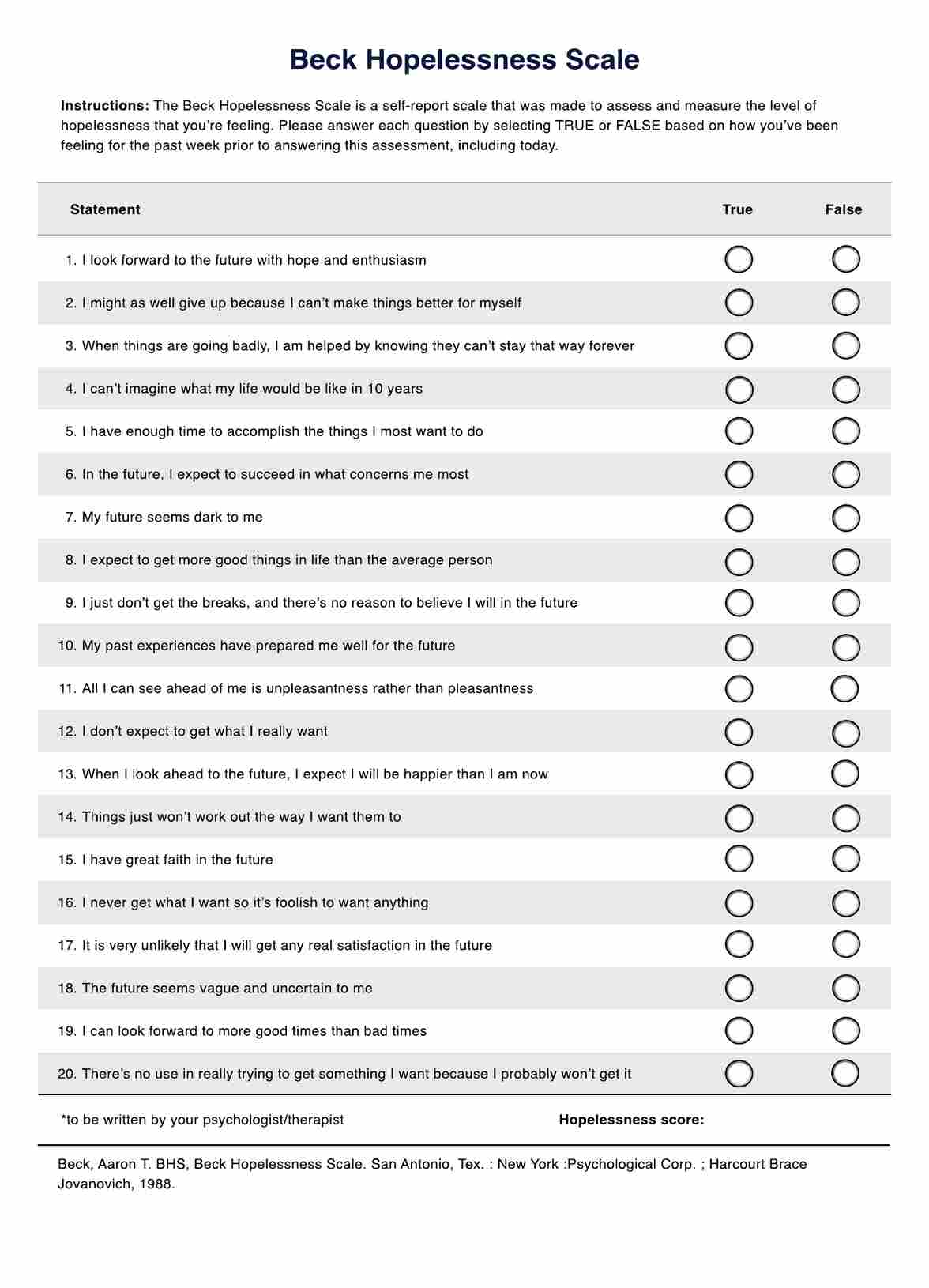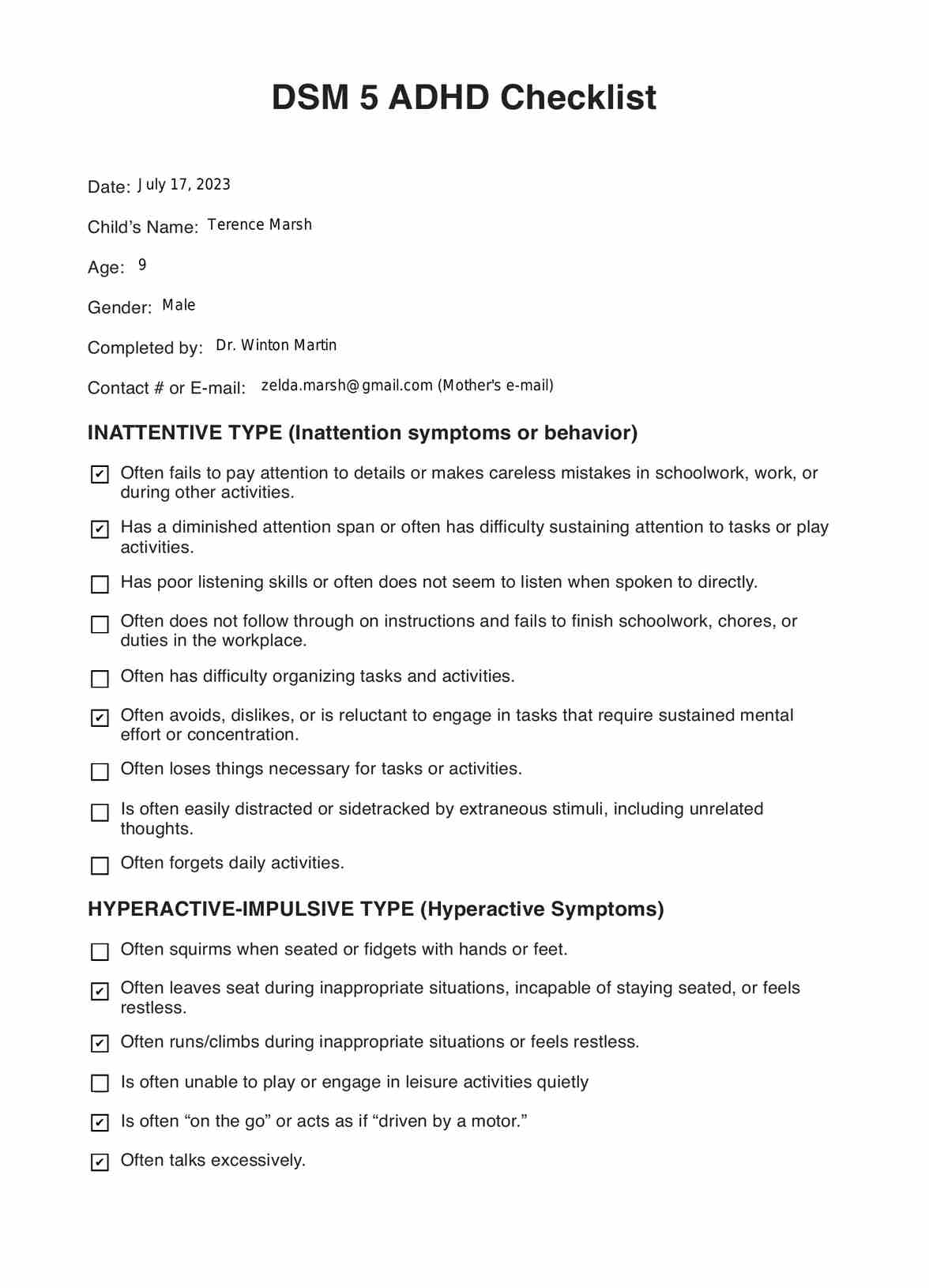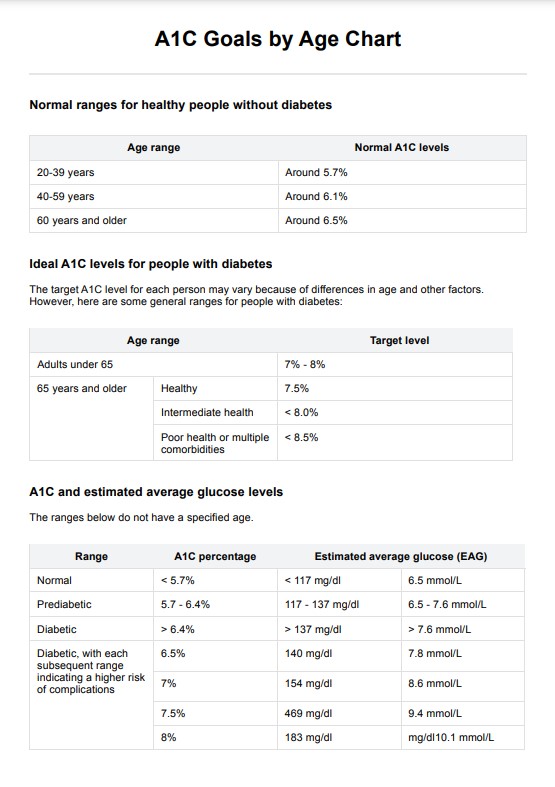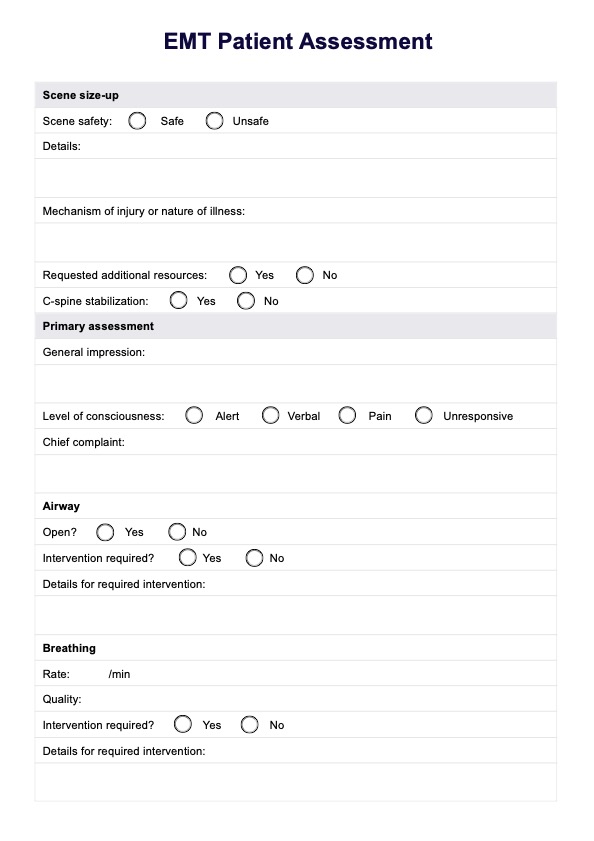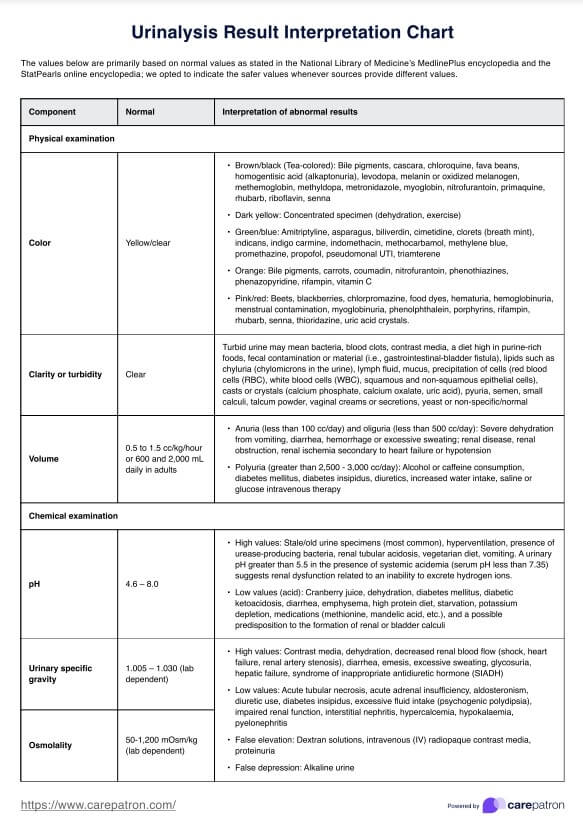Hip Labral Tears Test
Looking for information on hip labral tear tests? Learn about the different diagnostic exams used to identify this injury and get a proper diagnosis.


What is a Hip Labral Tear?
A is a condition that affects the soft tissue surrounding the hip joint. The hip labrum is a piece of cartilage that helps to stabilize the hip joint, and a tear in this tissue can cause pain and discomfort in the hip area.
Hip labral tears can occur due to a variety of reasons, including repetitive motions, sports-related injuries, and degenerative conditions like arthritis. Symptoms of a hip labral tear may include pain in the hip or groin area, stiffness or limited range of motion, a popping or clicking sensation in the hip joint, and difficulty walking or bearing weight on the affected hip.
Diagnosing a hip labral tear typically involves a physical exam and imaging tests, such as an MRI or CT scan, to visualize the hip joint and identify any damage. Treatment options may include physical therapy to strengthen the muscles surrounding the hip joint and improve range of motion, pain management strategies like ice and heat therapy or medication, or in severe cases, surgical intervention to repair or remove damaged tissue.
It is important to seek medical attention if you suspect you may have a hip labral tear, as leaving the condition untreated can lead to further damage and worsening of symptoms over time. With proper diagnosis and treatment, many people with hip labral tears can manage their symptoms and regain full hip joint function.
Have a look at this video to see how the assessment is performed:
Hip Labral Tears Test Template
Hip Labral Tears Test Example
How does this Hip Labral Tear Test work?
There are several tests that can be used to diagnose a hip labral tear. Here are the steps involved in performing one of the most common tests, the anterior impingement test:
- The patient lies on their back on an examination table.
- The examiner flexes the patient's hip and knee to 90 degrees.
- The examiner rotates the patient's hip inward and presses down on the knee to create a compressive force in the hip joint.
- The examiner then moves the patient's hip through a range of motion, extending and adducting the hip while maintaining the compressive force.
- The patient may report pain or discomfort in the hip joint during this maneuver, which can help identify a labral tear.
- Other tests that may be used to diagnose a hip labral tear include the posterior impingement test, the flexion-abduction-external rotation test, and the resisted straight leg raise test. These tests may involve different positions and movements of the hip joint, but they all aim to reproduce the pain and symptoms associated with a labral tear.
It is important to note that these tests are not always definitive in diagnosing a hip labral tear, and imaging tests like MRI or CT scans may be necessary to confirm the diagnosis. It is also important for these tests to be performed by a trained healthcare provider to ensure accuracy and safety.
Scoring
There is no standard scoring system for hip labral tear tests, as the diagnostic process typically involves a combination of physical exam findings, patient symptoms, and imaging results. However, healthcare providers may use a scoring system to help guide their clinical decision-making and treatment planning.
For example, some providers may use a scoring system based on the severity of the patient's symptoms, such as a numeric pain scale or a functional assessment tool like the Harris Hip Score. These scoring systems can quantify the patient's experience and monitor their progress over time.
Other scoring systems may be used to assess the specific findings on imaging tests like MRI or CT scans. For example, the classification system developed by the International Society of Hip Arthroscopy can help to categorize the type and severity of labral tears based on their location, size, and shape.
Ultimately, the most important factor in diagnosing and treating a hip labral tear is a comprehensive evaluation by a trained healthcare provider. Scoring systems can help guide this process, but they should be used in conjunction with clinical judgement and individualized patient care.
When to use these Hip Labral Tear assessments?
Hip labral tear assessments may be appropriate for individuals experiencing hip pain, stiffness, or other symptoms indicative of a labral tear. These assessments can help healthcare providers to diagnose the condition and develop an appropriate treatment plan.
Some common scenarios where hip labral tear assessments may be used include:
Sports injuries: Athletes who participate in high-impact sports like running, soccer, or football may be at increased risk for hip labral tears due to repetitive stress on the hip joint.
Chronic hip pain: Individuals experiencing chronic hip pain or stiffness that does not improve with rest or over-the-counter pain relievers may benefit from further evaluation for a possible labral tear.
Hip impingement syndrome: Hip impingement syndrome is a condition where the bones in the hip joint rub against each other, causing damage to the labrum and other soft tissues. Hip labral tear assessments may be used as part of the diagnostic process for this condition.
Post-surgical evaluation: Individuals who have undergone hip surgery, such as a hip arthroscopy or total hip replacement, may be evaluated for a labral tear during follow-up appointments.
It is important to note that not all individuals with hip pain or stiffness will require hip labral tear assessments, and a comprehensive evaluation by a trained healthcare provider is necessary to determine the appropriate diagnostic and treatment plan. Additionally, not all hip labral tears require surgical intervention, and conservative management strategies like physical therapy and pain management may be effective for many patients.
Who is this Hip Labral Tear Test PDF for?
The Hip Labral Tear Test PDF is designed for healthcare providers who evaluate patients with suspected hip labral tears. This may include:
Orthopedic surgeons: Orthopedic surgeons are specialized healthcare providers who evaluate and treat musculoskeletal conditions, including hip labral tears. They may use the Hip Labral Tear Test PDF as part of the diagnostic process and to monitor patient's progress during treatment.
Physical therapists: Physical therapists are healthcare providers who specialize in rehabilitation and movement-based therapies. They may use the Hip Labral Tear Test PDF to assess patients with hip labral tears and develop customized treatment plans.
Primary care physicians: Primary care physicians are often the first point of contact for patients with hip pain or other musculoskeletal complaints. They may use the Hip Labral Tear Test PDF as a tool to guide their evaluation and referral decisions.
Sports medicine specialists: Sports medicine specialists are healthcare providers who specialize in treating injuries and conditions related to athletic activity. They may use the Hip Labral Tear Test PDF to evaluate athletes with suspected hip labral tears and to develop customized treatment plans to help them return to sport safely.
.png)
Benefits of these free Hip Labral Tear Test Templates
Using the free Hip Labral Tear Test templates can provide several benefits for healthcare providers and their patients, including:
Standardization: The templates provide a standardized approach to evaluating patients with suspected hip labral tears, which can help to improve accuracy and consistency in diagnosis and treatment.
Efficiency: The templates are designed to be easy to use and can help healthcare providers to streamline their evaluation process, saving time and resources.
Communication: The templates can help healthcare providers to communicate their findings and recommendations more clearly to other members of the healthcare team, as well as to patients and their families.
Improved patient outcomes: By providing a standardized and efficient approach to evaluation and treatment, the templates may help to improve patient outcomes and reduce the risk of complications or prolonged recovery.
Education: The templates may also serve as a valuable educational tool for healthcare providers, helping them to stay up-to-date on current best practices for diagnosing and treating hip labral tears.
Cost-effectiveness: Using the free templates can help reduce the cost of care for patients and the overall cost of healthcare delivery by providing a standardized and efficient approach to evaluation and treatment.
Commonly asked questions
Athletes who participate in sports that involve repetitive hip motions, such as hockey, football, and soccer, are at increased risk for hip labral tears. However, anyone can develop a hip labral tear due to trauma or overuse.
The symptoms of a hip labral tear may include pain in the hip or groin, clicking or catching sensations in the hip joint, and stiffness or limited range of motion in the hip.
A hip labral tear is typically diagnosed through a combination of physical examination, imaging tests (such as an MRI or CT scan), and diagnostic injections.


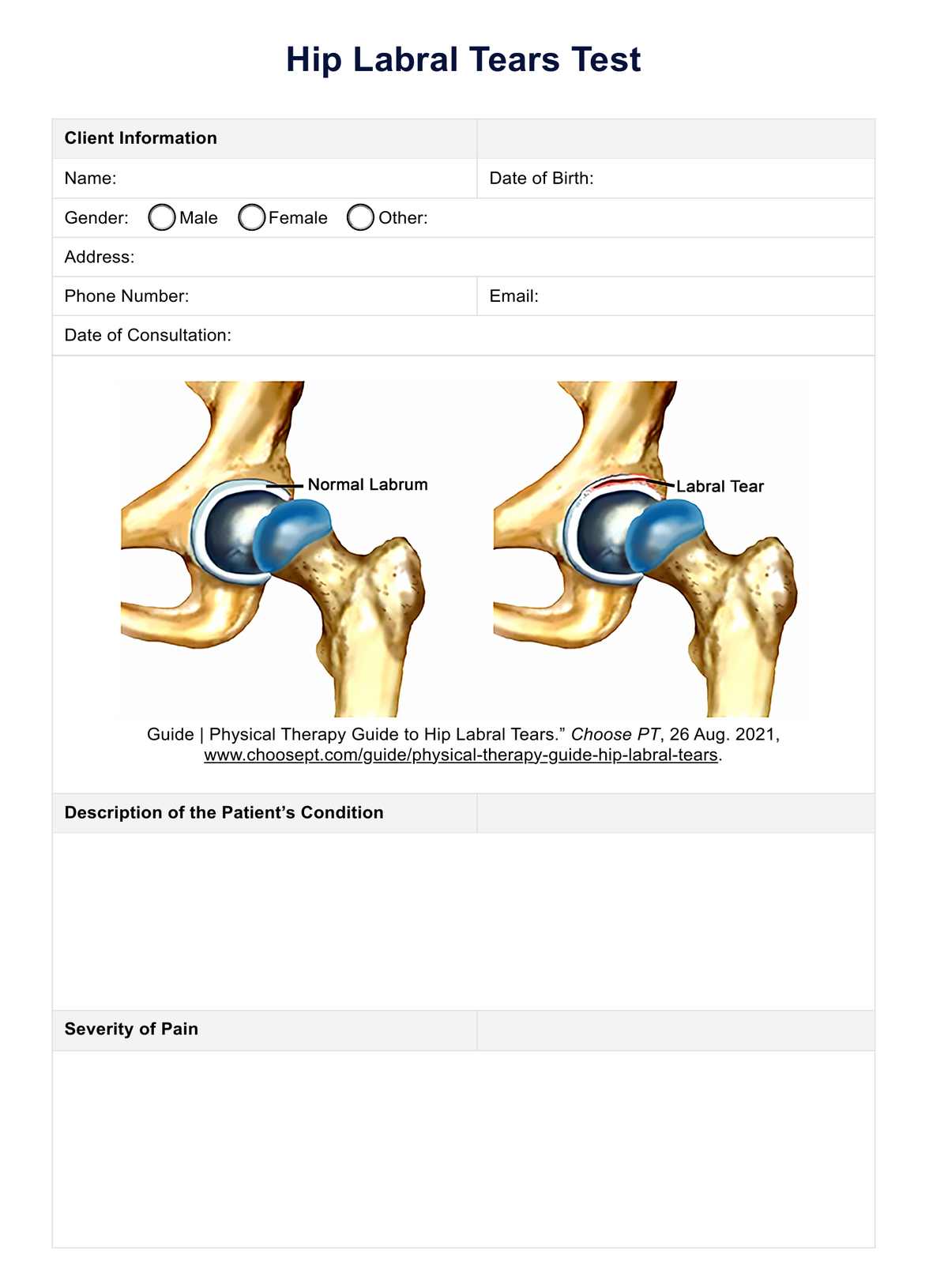
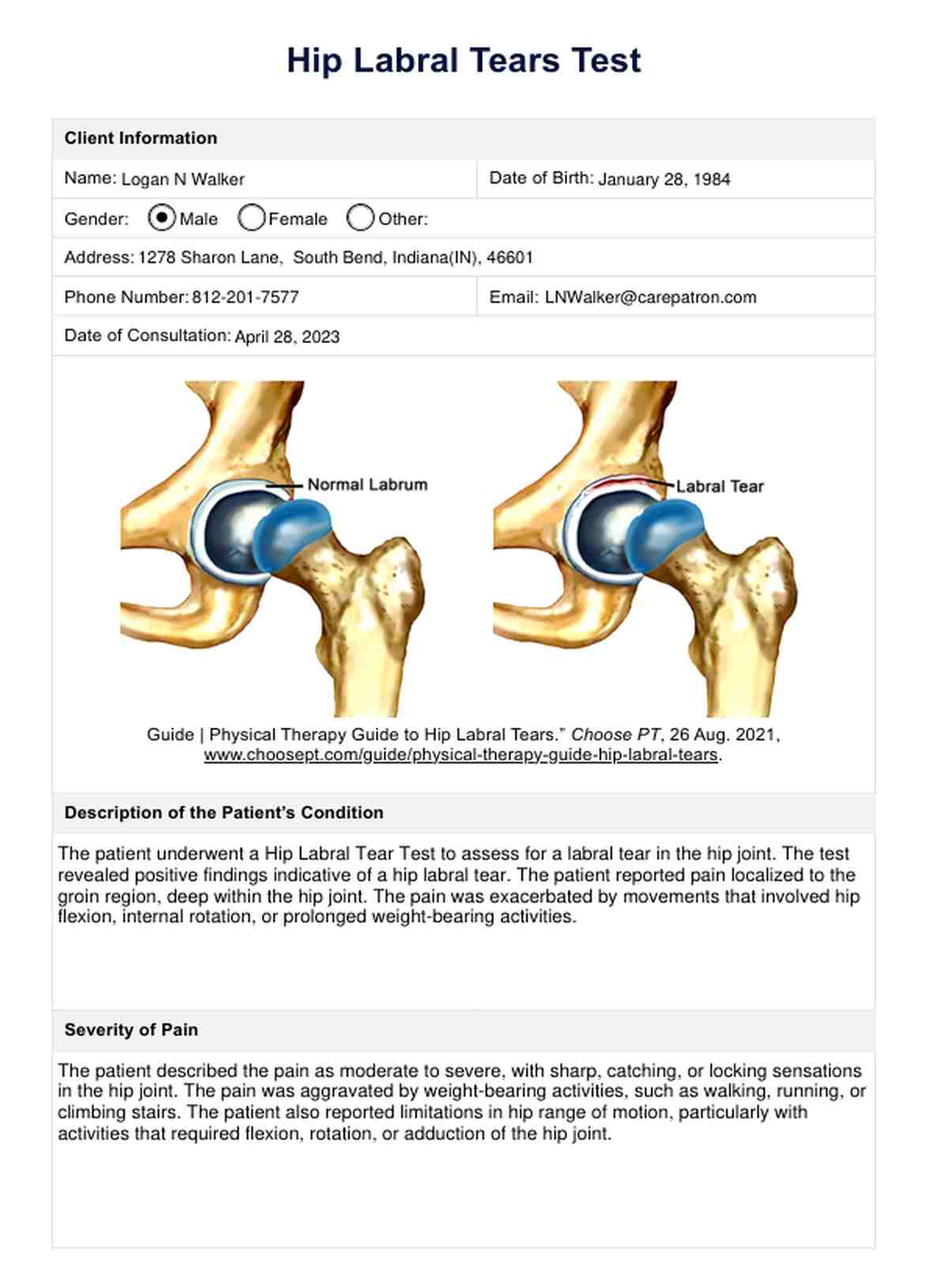

















-template.jpg)


















































































